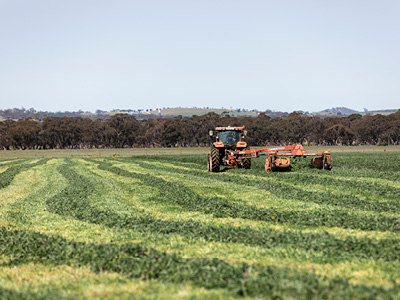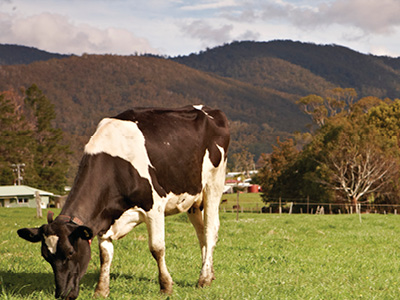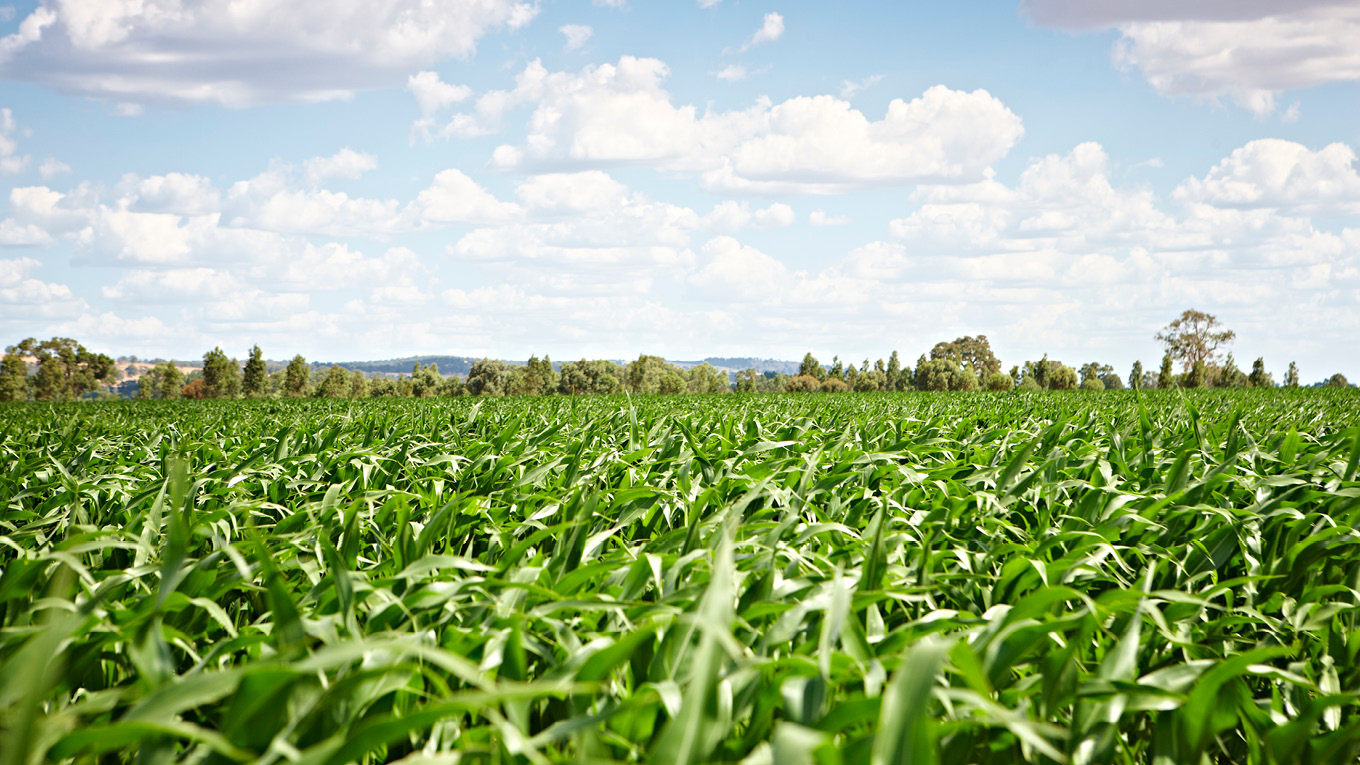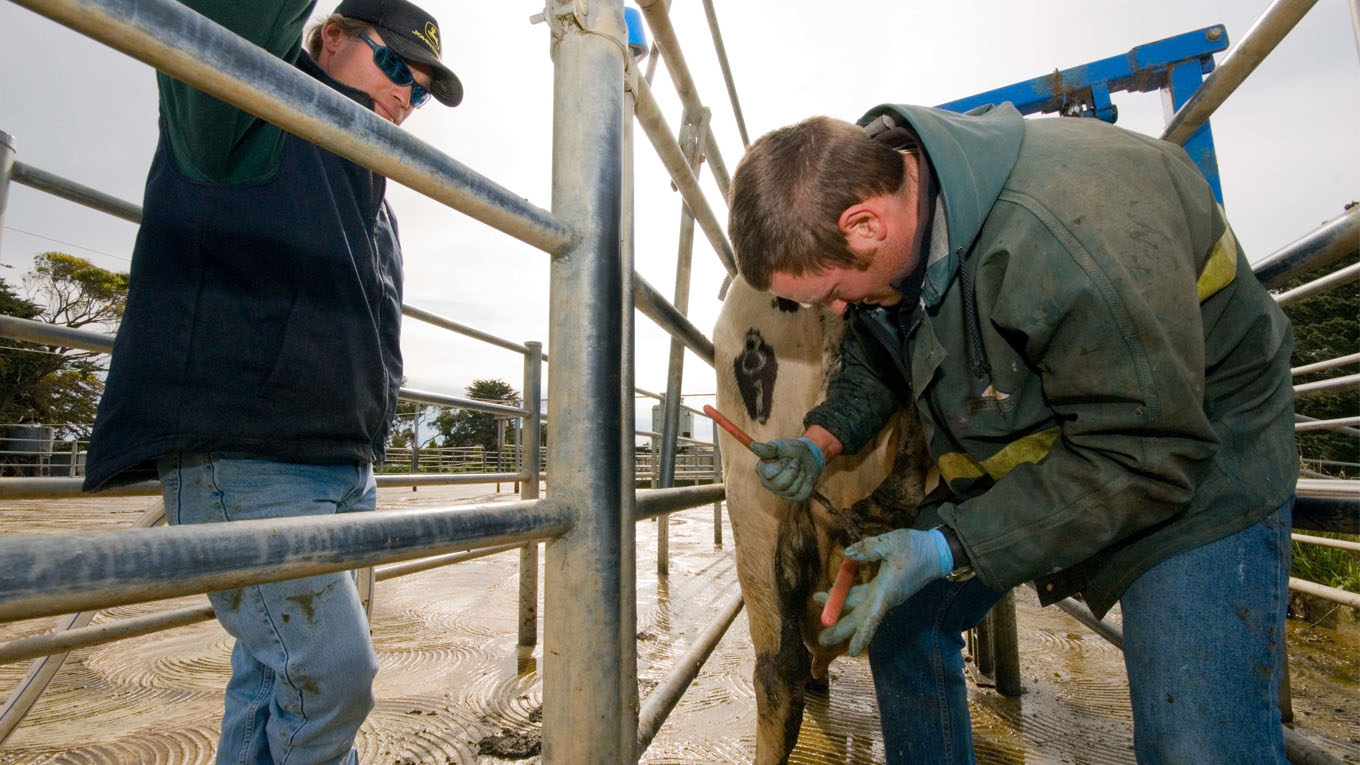Imported Feeds
Silage, hay, grains and concentrates are used on most dairy farms to supplement pasture, forages and crops. In pasture-based systems, supplements should be used to fill a genuine gap in the supply of home grown pasture.
Managing common feed supplements
Deciding which feed supplement to use should be based on a number of factors. These factors might include:
- The price of the supplement on a per megajoule of metabolisable energy (MJ ME) basis, or a per kilogram of crude protein basis if it is a protein supplement
- Whether the supplement aids in achieving a balanced ration for the herd
- How easy it is to feed out without high levels of wastage.
Dairy farmers should take into account:
- Nutritive quality
- Infrastructure
- Storage
- Wastage
- Logistics of feeding and using the supplement
Silage and hay
Silage and hay play an important role in filling seasonal feed gaps, managing pastures and providing lower cost, high-quality forage for cows. Maximising the quality of conserved fodder is one of the key principles of successful and profitable dairy farming in Australia, especially in locations where seasonal variation in directly-grazed home grown feed is high.
The Making Silage page has resources and information on best practice management in silage making, storage and feeding out.
Grain supplements
Starch-based concentrates such as wheat and barley are very common on most dairy farms in Australia. They are high in metabolisable energy (12.5 to 13.5 MJ ME per kilogram of dry matter) and provide a good supply of fermentable carbohydrates to the rumen.
These feeds are complementary to grazed pasture as they are lower in crude protein than pasture but provide more fermentable energy. This means the rumen is usually able to use this energy to efficiently utilise the excess rumen degradable protein that is often present in high-quality pasture and therefore produces more milk.
However, there are limits to the amount of starch-based concentrates that can be safely supplemented to dairy cows. The starch in wheat and barley is very rapidly degradable in the rumen which can cause rumen pH to drop quickly if too much is slug fed to cows. This may lead to acidosis. More information on this is available on the Ruminal Acidosis page.
Maize grain
Maize grain is high in energy density and starch content. The starch in maize grain has a slower rate of rumen degradation than wheat, barley or triticale, making it slightly safer to feed to cows than other grain supplements.
Maize grain may be useful as a complementary grain to wheat when:
- Grain is fed at high levels per cow per day
- Cows are freshly calved
- Cows are at increased risk of ruminal acidosis
- There is hot weather
To optimise milk responses from maize grain, processing prior to feeding needs to carefully control particle size.
More information is available on the Feeding maize grain to dairy cows fact sheet, which explains how grains provide starch for energy, possible applications for maize grain in dairy diets and processing prior to feeding.
Canola meal
Canola meal can be a very useful supplement for dairy farmers looking to make the most of available pasture or those looking to push production to take advantage of higher milk prices over the spring-summer period.
In recent years, canola meal has become a primary protein supplement for dairy cattle in Australia and globally.
Dairy Australia's Canola meal fact sheet contains a number of key messages for dairy farmers considering feeding canola meal.
- There are two types of canola meal – solvent extracted and expeller extracted
- Solvent extracted canola meal stimulates dry matter intake and milk responses in grazing milking cows
- Feeding canola meal may also be a useful grazing tool to maintain quality of spring pasture
- Canola meal is also useful for calves, heifers and springers
- Best milk responses occur when canola meal replaces part of barley/wheat supplement at moderate to high levels of intake. At least 1.7 kilograms of canola meal per cow per day is normally required for a substantial milk respons
- Seek advice from a nutritionist
- If using expeller canola meal, ensure the diet does not exceed the recommended maximum of 5% total fat
Sugarcane forage
During periods of feed shortages in northern Australia, some dairy farmers have turned to sugarcane as a forage option to fill feed gaps.
Dairy Australia's Sugarcane forage fact sheet provides a comprehensive overview of where sugarcane may fit in a dairy feeding system.




